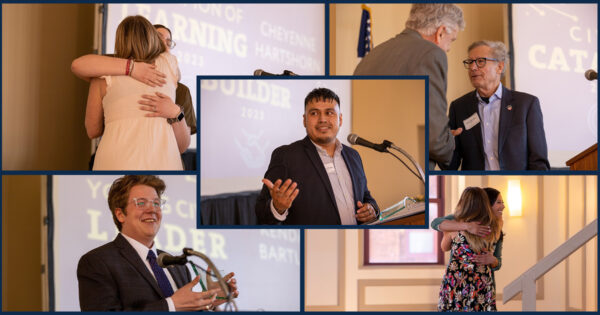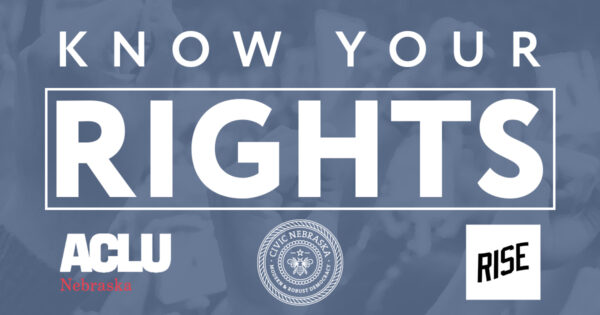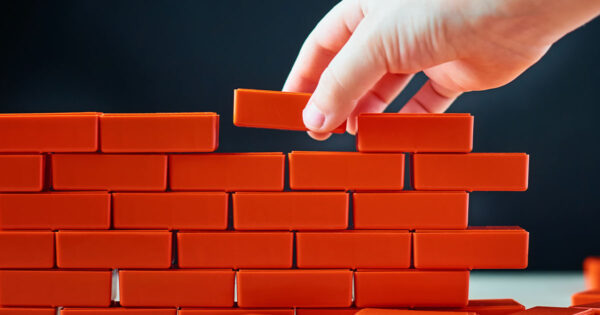Small group setup
Establishing functional structures, processes, and relationships within the core group that will do the bulk of the work.
Key features: Relationship-building, establishing communication and meeting protocol, and how to bring in new members.
Good for when: Forming a group for the first time or regrouping around a new purpose.
Organizer goals:
To bring together a group that gels, works well together, and represents the people and interests affected by the project. To lay the groundwork to help the group stick together to keep things moving forward.
Organizer key questions:
›› How can we help this group build authentic relationships with one another?
›› Which interests/expertise/groups should be represented in the core team?
›› What norms and expectations will help our core group work together effectively?
If this is weak:
Your effort may lack structures, processes, and relationships within a core group. If not addressed, it may be hard to sustain the effort in the long term, or outreach and involvement may be difficult for groups not represented within the core team. Strategies to build rapport among the core team, boost representation and connection with underrepresented community groups, and setting clear expectations and procedures for communication can help you form a group that will carry the work through to completion.
If this is strong:
Your core group structures and relationships are strengths that will help you engage the community and work effectively toward your goals. Strong relationships can help your group have real conversations that value diverse perspectives. Solid group structures will help you stay on track, keep everyone informed, and involve the full wisdom of the group in decision-making.
Resources for small group setup:
›› Printable civic readiness assessment guide
›› Go beyond ice-breakers to help the group build connections with one another. Consider using a process like Civity to build relationships and understanding.
›› Utilize the Census or Economic Profile System to understand the true demographics of your town or neighborhood.
›› Use the Communication Blueprint to discuss how your group would prefer to keep in touch and get together.
Network mapping
Identifying and understanding the people and groups within the community.
Key features: Brainstorming community networks, identifying genuine connectors and communication channels, and broadening acceptance of who should be involved.
Good for when: Starting a new project, when group knowledge of the full diversity of the community is limited, or residents’ gifts and talents are underutilized.
Organizer goals:
To make the invisible gifts and connections within a community visible. To challenge the group to expand and deepen its understanding of the community.
Organizer key questions:
›› Who are the key networks of people in the community? Who can connect to them?
›› What are the aspirations and gifts of people in these networks that could be contributed to this project?
›› What are people in these networks’ preferred channels of communication? Where do we see them in the community?
If this is weak:
Your effort could benefit from a greater understanding of the full spectrum of community networks and interests. If not addressed, your effort may miss out on the contributions of groups and individuals whose gifts and skills may be able to offer something unique and special to the effort. Involvement and ownership from a broad base of networks can reduce the risk of burnout of a few individuals or groups, provide more support for your effort, and make residents feel valued and connected in your community. Give your effort a boost by identifying key groups in the community, documenting a trusted liaison and preferred lines of communication, and finding ways to incorporate new gifts and skills into the effort.
If this is strong:
Your group has a good handle on the many groups, networks, and interests in the community. You will be able to utilize this ‘map’ of the community to make sure everyone can be involved and knows what is happening. Knowing these networks can help you supplement your core team when necessary and do effective outreach for exploration, gathering input, or involving partners.
Resources for network mapping:
›› Printable civic readiness assessment guide
›› Asset Mapping Activity
›› Utilize the Census or Economic Profile System to understand the true demographics of your town or neighborhood
Exploration
Encouraging people and groups to learn more about themselves, their community, or an issue, and possibly discover innovative solutions.
Key features: Suspending assumptions, creating a space that encourages a different kind of conversation, using ritual and symbolism to encourage openness, and emphasizing listening.
Good for when: When the group or community seems stuck or muddled and needs to reflect on its circumstances in depth and gain collective insight.
Organizer goals:
To encourage new insights and connections to emerge by creating a space for people to share both their thoughts and their feelings.
Organizer key questions:
›› How can we ensure that people feel safe expressing what inspires and touches them?
›› What kind of techniques or rituals will stimulate listening and sharing, without making people uncomfortable?
If this is weak:
Your group may lack clarity about the issue at hand and the outcomes you hope to achieve or may feel stuck or muddled about the best direction. If not addressed, you may continue to struggle to find support for solutions or you may not have the impact you intended. If residents with differing perspectives do not better understand each others’ views, the community may struggle to come together in a common direction. Further listening and sharing of stories or further research about the issue, may help your group understand how this issue affects the community and possibly discover innovative solutions.
If this is strong:
Your group is very knowledgeable about your issue and the action you’re taking to address it. Your research and the stories you’ve gathered from community members can help you make a compelling pitch to attract new partners. You have a good base of information to understand how to proceed, whether it’s resolving conflict, weighing options, or planning for action.
Resources for Exploration:
›› Printable civic readiness assessment guide
Conflict transformation
Resolving conflicts, fostering personal healing and growth, and improving inter- and intra-group relations.
Key features: Creating a safe space, hearing from everyone, building trust, and sharing personal stories and views.
Good for when: Relationships among participants are poor or not yet established and need to be. The issue can only be resolved when people change their behavior or attitude, expand their perspective, or take time to reflect and heal.
Organizer goals:
To create a safe space for people with different views to talk about their personal experiences and feel heard. Often, to set the groundwork for deliberation and action.
Organizer key questions:
›› How can the issue be framed so that all sides are brought to – and feel welcomed at – the table?
›› What are people’s needs relating to this issue, and how can divergent needs (healing, action, respect) be met effectively?
›› If a conflict exists, how overt and volatile is it? How, if at all, will you transition people to “what’s next?”
If this is weak:
Relationships among participants in your effort may be poor or not yet established. If unaddressed, underlying conflicts or mistrust may slow progress, undermine possible solutions, or resurface and cause new wounds or further “digging in.” Your effort may benefit from conversations where people with different views can talk about their personal experiences and feel heard, listening for how needs of healing, action, and respect can be met effectively.
If this is strong:
Trust and respect are present even in tough conversations about this issue. The positive working relationships in your community, even among parties who may disagree, will help you make progress and find solutions that work well for the whole community.
Resources for Conflict Transformation:
›› Printable civic readiness assessment guide
Decision-making
Influencing public decisions and public policy and improving public knowledge.
Key features: Conversations about complicated policy issues. Naming and framing, weighing all options, considering different positions and opinions, revealing public values, and brainstorming solutions.
Good for when: The issue is within the government’s (or any single entity’s) sphere of influence. Public information or input is important to the process, but decision-making is ultimately made by a single entity.
Organizer goals:
To improve decision-making to work better for more people through communication to and involvement of a representative group of citizens
Organizer key questions:
›› How do we better inform residents about this issue?
›› How can we best represent the public (random selection, active recruitment, involving large numbers of people) in this process?
›› Should/can public officials participate in the process side-by-side with citizens?
›› What kinds of materials need to be developed or obtained?
›› How can we ensure that this process influences policy?
If this is weak:
Your effort may need further communication with the community explaining the issue and listening to feedback on values and options. Residents may be disengaged or unprepared to influence public decision-making. If unaddressed, you may have trouble getting support and resident’s values and opinions may be left out of solution finding. Further outreach and opportunities for input can help you frame the issue fairly and ensure decisions are made with the public interest in mind.
If this is strong:
Your community and leaders are well aware of the issue and your proposed actions. This readiness may be combined with a good foundation or plan for weighing options and gathering input. You may be able to expand the reach of these good decision-making and information processes or invite some participants “up the ladder” into collaboration.
Resources for Decision-making:
›› Printable civic readiness assessment guide
Collaborative action
Empowering people and groups to solve complicated problems and take responsibility for the solution.
Key features: Generating ideas for community action, and developing and implementing action plans collaboratively.
Good for when: The issue/dispute requires intervention across multiple public and private entities, and anytime community action is important.
Organizer goals:
To encourage integrated efforts among diverse stakeholders, sectors, organizations, etc. involved in the problem.
Organizer key questions:
›› Who needs to be at the table?
›› What kind of power dynamics exist already?
›› What group / leader / institution is most resistant to change?
›› What group tends not to be at the table, although they’re affected?
If this is weak:
Your partnerships may seem a bit disorganized or under-resourced. If unaddressed, your effort may not reach its full potential and involvement may drop off. Further organizing partners and funders (first locally, but including outside the community) around a common purpose and shared plan of action may help ensure that everyone who wants to contribute can do so. When community-wide action is needed, fully integrating all groups’, residents’, and donors’ gifts is critical to success.
If this is strong:
Your strong organization for action helps you work together effectively and get the most out of your partnerships to benefit the community. Your collaborators are poised for action and know their roles, making it easier for new contributors to be wrapped in and be a part of the effort
Resources for Collaborative action:
›› Printable civic readiness assessment guide
CIVIC NEBRASKA NEWS

Nominate a Nebraskan for a Strengthening Democracy Award
May 2, 2024
No Comments
On June 27, Civic Nebraska will honor five Nebraskans whose acts help to build a more modern and robust democracy. Through May 17, we’re accepting nominations from the public in five categories of democracy-building.

Voting rights info headed to Nebraska’s county jails
April 29, 2024
No Comments
The right to vote is fundamental. We and our partners are dedicated to providing clarity and ensuring that justice-impacted individuals understand and can exercise their right to vote.

Civic health in the wake of disaster
April 28, 2024
No Comments
The moment the skies cleared Friday, Nebraskans got to work – and in doing so, embodied our state’s strong civic health.
